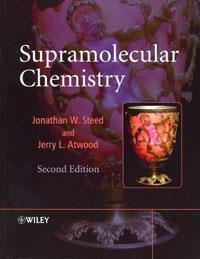the second edition of Steed and Atwood's Supramolecular chemistry is the most comprehensive overview of the area available in textbook form
Supramolecular chemistry
Jonathan Steed and Jerry Atwood
Weinheim, Germany: Wiley VCH 2009 | 990pp | ?45.00 (SB)
ISBN 9780470512340
Reviewed by Phil Gale

At just under 1000 pages, the second edition of Steed and Atwood’s Supramolecular chemistry is the most comprehensive overview of the area available in textbook form.
The book starts with an introduction to the basic concepts of molecular recognition, pre-organisation, the nature of supramolecular interactions and a look at biological systems as an inspiration for supramolecular design.
As the reader progresses through the book the level of complexity increases. The first part of the book covers molecular recognition with a series of chapters on cation, anion, ion-pair and neutral guest complexation by synthetic receptors that provide a logical and comprehensive introduction to each area. The central section centres on the solid state providing an overview of inclusion complexes, clathrates, interactions in crystals, coordination polymers and metal-organic frameworks. The final third covers self-assembly, topological bonding, sensing, molecular machines, catalysis and soft-matter.
Of course in a textbook on supramolecular chemistry, figures are all-important and here each chapter is well illustrated with a combination of chemical diagrams and crystal structures. A separate section of colour illustrations is included for the more complex figures.
In addition to good coverage of the primary literature, perhaps one of the most useful features for those wishing to delve deeper are the key references at the start of each section to a seminal book or review which provides the interested reader with a gateway to the supramolecular literature.
Each chapter ends with a summary of key learning points and a useful section of study problems.
The book provides the foundation for a course on supramolecular chemistry with extra resources such as the solutions to the study problems and the figures in the book available online from
the publisher.
Aimed at the senior undergraduate level, the book will also be a useful resource for both postgraduates and more experienced researchers alike and is highly recommended.












No comments yet